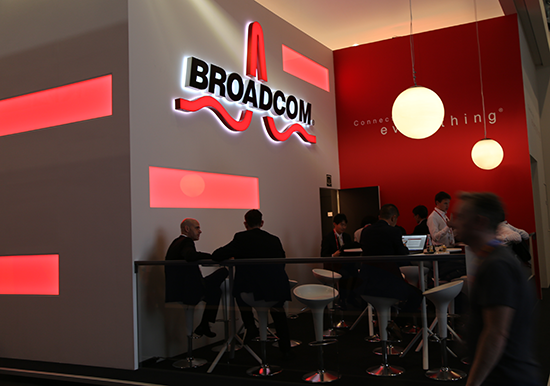
Pacnet, which operates submarine cable systems connecting 15 cities in the Asia-Pacific region, has deployed Infinera’s new Open Transport Switch (OTS) software to extend virtualization into the optical layer of its network. Pacnet’s existing Intelligent Transport Network is based on the Infinera DTN-X packet optical transport networking platform.

Infinera’s OTS is now deployed within the Pacnet Enabled Network (PEN), which is an SDN-based service delivery platform that offers Layer 2 Ethernet services on-demand from 1 megabit per second to 10 Gbps. PEN delivers scalable bandwidth and software-enabled intelligence, allowing customers to dynamically provision bandwidth in minutes through a custom portal based on their business needs.
The combination of Infinera's DTN-X platform with the new Open Transport Switch allows PEN to offer a Layer 1 transport bandwidth on-demand service in increments of N x 10 Gbps. It is designed to allow services in increments of N x 100 Gbps for high-capacity customers in the future. The deployment runs in Hybrid Control mode, with new services leveraging bandwidth under SDN control, while existing production services continue to operate using their Infinera DNA network management system.
Pacnet said it was able to get the new OTS capabilities up and running in its PEN platform in a matter of a few months. Pacnet is shifting into a DevOps model and Infinera is designing its optical solution for this same IT mindset. The Infinera OTS software, which leverages an open web 2.0 architecture, abstracts and virtualizes the underlying multi-layer Intelligent Transport Network taking advantage of the highly scalable and software controllable DTN-X platform. OTS then presents modern, open application programming interfaces (APIs) to enable simple programming of the transport network by any SDN controller or orchestration system. It runs on x86 Linux server.
“In November 2013, we launched the industry’s first fully-automated, SDN-based service delivery platform, Pacnet Enabled Network, on Layer 2 Ethernet. Today, we are excited to continue to lead through innovation by bringing this capability to our optical layer," said Jim Fagan, president, managed services at Pacnet. "With this deployment, Pacnet can deliver to our customers a true Cloud experience to better utilize our unrivalled network assets.”
“The production deployment of the Infinera Open Transport Switch to support Pacnet’s innovative new service demonstrates how an open networking approach, combined with a DevOps model, reduces time to market for new services,” said Stu Elby, senior vice president, Cloud network strategy and technology at Infinera. “We believe the availability of the Infinera Open Transport Switch makes the Infinera Intelligent Transport Network the most programmable optical networking solution available, enabling our customers to rapidly develop new services with the SDN controller of their choice.”
http://www.infinera.com/j7/servlet/NewsItem?newsItemID=444
 In December 2014, Telstra announced plans to acquire Pacnet Limited, which owns and operates a pan-Asian submarine cable network and offers managed services and data center services to carriers, multinational corporations and governments across the region, for US$697 million acquisition is subject to completion adjustments. In addition to its submarine cables and 21 landing stations in China, Hong Kong, Japan, the Philippines, Singapore, South Korea and Taiwan, Pacnet’s core assets comprise an integrated network with 109 PoPs across 61 cities in the Asia-Pacific region, along with 29 data centers in key locations. Seven of the data centers have Tier III accreditation. In addition, Pacnet controls two of the five fibre pairs on the Unity trans-Pacific submarine cable network connecting Japan to the United States.In the year ended December 2013, Pacnet generated revenues of US$472m and earnings before interest, tax, depreciation and amortisation (EBITDA) of US$111m. Pacnet is headquartered in both Singapore and Hong Kong with approximately 815 employees across 25 offices (including PBS China).
In December 2014, Telstra announced plans to acquire Pacnet Limited, which owns and operates a pan-Asian submarine cable network and offers managed services and data center services to carriers, multinational corporations and governments across the region, for US$697 million acquisition is subject to completion adjustments. In addition to its submarine cables and 21 landing stations in China, Hong Kong, Japan, the Philippines, Singapore, South Korea and Taiwan, Pacnet’s core assets comprise an integrated network with 109 PoPs across 61 cities in the Asia-Pacific region, along with 29 data centers in key locations. Seven of the data centers have Tier III accreditation. In addition, Pacnet controls two of the five fibre pairs on the Unity trans-Pacific submarine cable network connecting Japan to the United States.In the year ended December 2013, Pacnet generated revenues of US$472m and earnings before interest, tax, depreciation and amortisation (EBITDA) of US$111m. Pacnet is headquartered in both Singapore and Hong Kong with approximately 815 employees across 25 offices (including PBS China). Facebook released its open switching system (code-named “FBOSS”) on GitHub. The initial release consists primarily of the FBOSS agent, a daemon that runs on each switch and manages the hardware forwarding ASIC. It receives information via configuration files and thrift APIs and then programs the correct forwarding and routing entries into the chip. It also processes packets from the ASIC that are destined to the switch itself, such as control plane protocol traffic, and other packets that cannot be processed solely in hardware. Facebook describes FBOSS as a set of applications that can be run on a standard Linux OS.
Facebook released its open switching system (code-named “FBOSS”) on GitHub. The initial release consists primarily of the FBOSS agent, a daemon that runs on each switch and manages the hardware forwarding ASIC. It receives information via configuration files and thrift APIs and then programs the correct forwarding and routing entries into the chip. It also processes packets from the ASIC that are destined to the switch itself, such as control plane protocol traffic, and other packets that cannot be processed solely in hardware. Facebook describes FBOSS as a set of applications that can be run on a standard Linux OS.

















